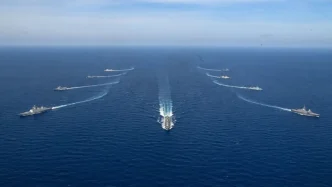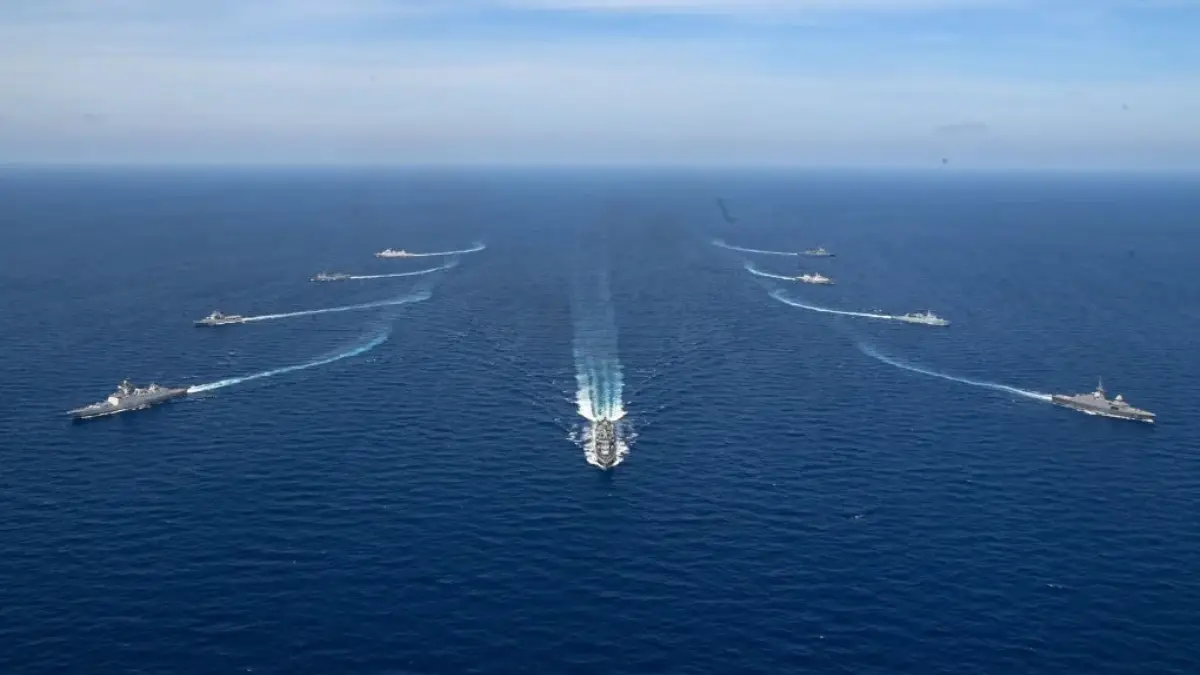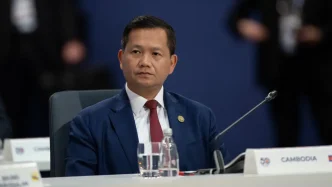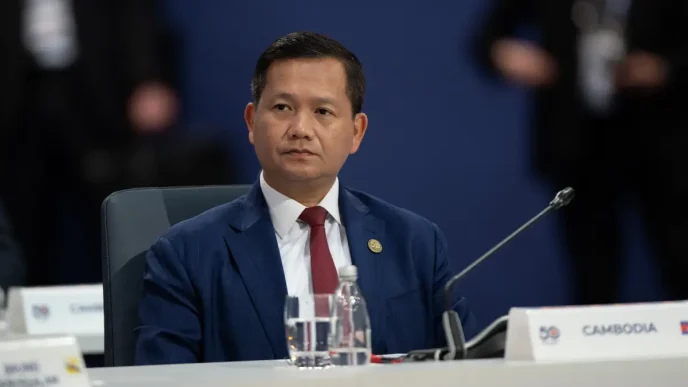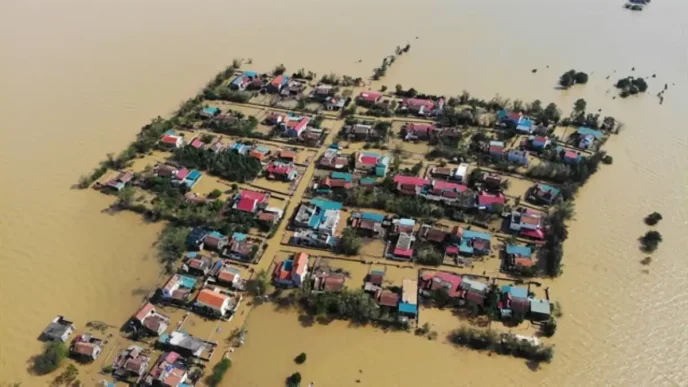Two Chinese naval vessels were spotted closely observing a joint sail between the Philippines and India in the South China Sea on Tuesday, raising concerns over regional tensions in the disputed waters. The sighting, confirmed by Philippine naval sources, underscores the ongoing strategic competition in an area critical to global trade and security. As Manila strengthens military ties with New Delhi, Beijing’s apparent surveillance of the exercise signals heightened scrutiny of such partnerships amidst overlapping territorial claims.
A Strategic Partnership in Disputed Waters
The joint sail, conducted within the Philippines’ exclusive economic zone (EEZ), involved the Philippine Navy’s BRP Ramon Alcaraz and the Indian Navy’s INS Kadmatt. The exercise, part of a broader effort to enhance interoperability between the two navies, took place in waters west of Palawan, an area within the contested South China Sea. Philippine naval officials described the activity as a routine passage exercise aimed at fostering cooperation and sharing best practices in maritime security.
The South China Sea, a vital conduit for over $3 trillion in annual trade, remains a flashpoint due to competing claims by China, the Philippines, Vietnam, Malaysia, Brunei, and Taiwan. China asserts sovereignty over nearly 90% of the sea under its Nine-Dash line, a claim rejected by an international arbitral tribunal in 2016. Despite the ruling, Beijing has continued to militarize artificial islands and deploy vessels to assert control, often clashing with neighboring states over fishing rights and resource exploration.
The presence of two Chinese ships—identified as a People’s Liberation Army Navy (PLAN) vessel and a China Coast Guard (CCG) ship—during the joint sail was noted by Philippine forces. While the vessels maintained a distance and did not interfere, their proximity suggested active monitoring of the exercise. This incident is not isolated; Chinese ships have frequently shadowed multinational drills in the region, including those involving the United States, Australia, and Japan, as part of Beijing’s broader strategy to track military activities near its claimed territories.
Philippines-India Naval Ties Deepen
The joint sail marks a significant step in the growing defense relationship between Manila and New Delhi. India, though not a claimant in the South China Sea, has expressed concern over freedom of navigation and overflight in the region, aligning with international calls for adherence to maritime law. The exercise with the Philippines follows similar engagements with other Southeast Asian nations, reflecting India’s Act East policy to counterbalance China’s influence in the Indo-Pacific.
Philippine defense officials view such partnerships as essential to building a network of allies amid persistent challenges in the West Philippine Sea, the local term for parts of the South China Sea within Manila’s EEZ. Recent years have seen an uptick in confrontations between Philippine and Chinese vessels, particularly near the Second Thomas Shoal, where Manila maintains a grounded ship as an outpost. Incidents involving water cannons and floating barriers deployed by the CCG have drawn international condemnation, prompting the Philippines to seek stronger security ties with nations like India.
India’s involvement also carries symbolic weight. As a rising naval power with a fleet of over 130 vessels, New Delhi has supplied military equipment to Manila, including BrahMos supersonic cruise missiles under a $375 million deal signed in 2022. While the joint sail was limited in scope, it signals potential for deeper collaboration, including joint patrols or expanded exercises in the future. Analysts suggest that such moves could complicate China’s calculations in the region, as more external players engage with Southeast Asian states on security matters.
China’s Surveillance and Regional Implications
The monitoring by Chinese vessels highlights Beijing’s sensitivity to foreign military presence in the South China Sea. While China has not issued an official statement on this specific incident, its foreign ministry has previously criticized multinational exercises as provocative and destabilizing. The PLAN and CCG often deploy ships to observe such activities, gathering intelligence on tactics, capabilities, and coordination among participating navies.
This latest episode comes amid a flurry of diplomatic and military maneuvers in the region. In July 2025, China conducted large-scale joint exercises with Russia in the South China Sea, signaling its intent to project power alongside strategic partners. Meanwhile, the United States and its allies have ramped up their own drills under initiatives like the Quad and AUKUS, further crowding the geopolitical landscape. For smaller nations like the Philippines, navigating these rivalries requires a delicate balance—strengthening deterrence through alliances while avoiding direct escalation with China, a major economic partner.
Experts note that Chinese surveillance of bilateral exercises like the Philippine-India sail may also serve as a message to other regional players. By visibly tracking such activities, Beijing reinforces its stance that it considers the South China Sea a core interest, where external involvement is unwelcome. This approach, however, risks alienating neighbors and pushing them toward closer alignment with powers like India and the United States.
Broader Geopolitical Context
The South China Sea dispute is not merely a territorial issue but a litmus test for the rules-based international order. The Philippines, backed by the 2016 arbitral ruling, continues to assert its rights to fish and explore resources within its EEZ. Yet, enforcement remains a challenge against China’s superior naval presence. Incidents of harassment against Filipino fishermen and survey vessels have fueled domestic calls for a tougher stance, even as President Ferdinand Marcos Jr. pursues a pragmatic approach combining diplomacy and defense modernization.
India’s role in this dynamic is evolving. While historically focused on its immediate neighborhood, New Delhi has increasingly engaged with ASEAN nations to promote a free and open Indo-Pacific. Its participation in forums like the East Asia Summit and naval exercises with regional partners underscores a shift toward a more assertive posture. For the Philippines, collaboration with India offers not just military benefits but also economic opportunities, as both nations explore trade and investment ties to offset reliance on China.
The sighting of Chinese vessels during the joint sail also raises questions about the efficacy of existing mechanisms to manage tensions. The Code of Conduct (COC) for the South China Sea, negotiated between China and ASEAN since 2002, remains incomplete despite years of talks. Critics argue that Beijing’s actions—such as shadowing exercises or building infrastructure on disputed reefs—undermine the spirit of dialogue, leaving smaller states with limited recourse beyond internationalizing the issue.
Local and International Reactions
Philippine naval officials have refrained from commenting directly on the Chinese vessels’ presence, likely to avoid inflaming tensions. However, the incident has sparked discussion among local analysts about the need for greater transparency in reporting such encounters. Public sentiment in the Philippines often swings between frustration with China’s assertiveness and wariness of entanglement in great-power rivalries, complicating government policy.
Internationally, the event has drawn attention to the broader contest for influence in the Indo-Pacific. Western allies of the Philippines, including the United States and Australia, have reiterated support for Manila’s sovereign rights, while urging all parties to abide by international law. India, for its part, has emphasized the importance of a rules-based order without explicitly naming China, reflecting its cautious approach to balancing relations with both Beijing and ASEAN states.
Looking Ahead
As the Philippines and India deepen their naval cooperation, the South China Sea is likely to witness more such encounters with Chinese vessels. The challenge for Manila lies in sustaining these partnerships without provoking a direct confrontation that could spiral into broader conflict. For now, the joint sail serves as a reminder of the delicate dance of diplomacy and deterrence in one of the world’s most contested maritime regions.
Whether these bilateral exercises evolve into a more robust counterweight to China’s presence remains to be seen. What is clear, however, is that the waters west of Palawan are no longer just a local concern but a theater for global strategic competition, where every sail, every ship, and every sighting carries weight beyond the horizon.

